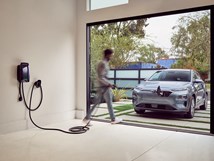Waymo to Sell Lidar for Non-Auto Applications
Alphabet Inc.’s Waymo self-driving car unit hopes to lower the cost of its lidar sensors by building a market for them beyond the auto industry.
Alphabet Inc.’s Waymo self-driving car unit hopes to lower the cost of its lidar sensors by building a market for them beyond the auto industry.
Waymo (formerly known as Google Project X) began developing its own lidar systems in 2011. The company uses three variants with short-, medium- and long-range fields of view.

The short-range perimeter sensor has a 360° horizontal field of view and as much as a 95° vertical field. Waymo says the lidar has a minimum range of zero, allowing the device to detect objects immediately in front of it. This makes the sensor well suited for low-speed applications in which near-object detection and avoidance is necessary.
Waymo uses lidar coupled with radar and cameras on its fleet of self-driving Chrysler Pacifica minivans. The Laser Bear sensor is mounted on the vehicle’s bumpers.
Simon Verghese, who heads Waymo’s lidar team, posted a blog about third-party sales HERE.
RELATED CONTENT
-
On Automotive: An All Electric Edition
A look at electric vehicle-related developments, from new products to recycling old batteries.
-
Cobots: 14 Things You Need to Know
What jobs do cobots do well? How is a cobot programmed? What’s the ROI? We asked these questions and more to four of the leading suppliers of cobots.
-
Multiple Choices for Light, High-Performance Chassis
How carbon fiber is utilized is as different as the vehicles on which it is used. From full carbon tubs to partial panels to welded steel tube sandwich structures, the only limitation is imagination.








